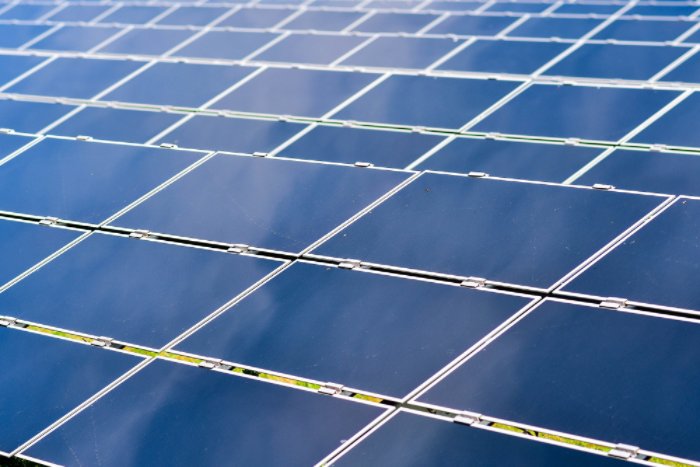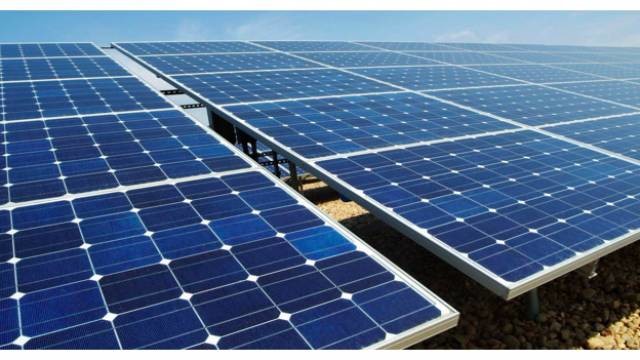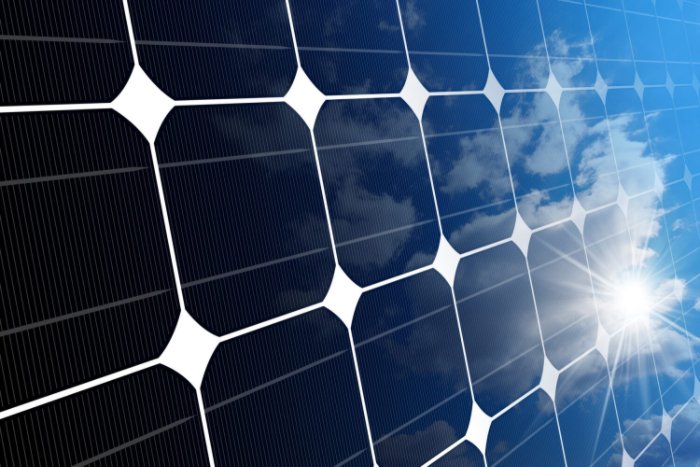Monocrystalline silicon is more efficient, reaching up to 22%, but costlier. Polycrystalline is less efficient at 15-17%, yet cheaper and more sustainable to produce.
Efficiency Comparison
While solar panels have become increasingly more common in modern times, the most efficient kind of silicon to use with these panels is still up for debate. The two prominent forms of silicon are monocrystalline and polycrystalline, and they come with a range of differences in performance, cost and efficiency.
Monocrystalline Silicon Efficiency
Monocrystalline silicon is known for being the most efficient kind of silicon for solar panels. This material can achieve efficiency levels from 18% to 22%. The component is more efficient than polycrystalline because the pure nature of monocrystalline silicon crystallization permits regular electron movement. In this process, known as the Czochralski method, a crystal is slowly pulled from a bated silicon mixture, allowing the silicon to crystallize. This thus means that monocrystalline silicon’s pure form and clear-cut composition is what aides in its high-performing technology and suitability for low-light environments and high temperatures .
Polycrystalline Silicon Efficiency
In contrast, polycrystalline silicon’s efficiency levels are recorded to be within the 15% to 17% range. This is because the silicon itself is made up of many smaller crystals or ‘grains’, which means they are no longer pure because their orientation and shape are not the same due to the various boundaries that appear when crystal lattices meet. The silicon product is made through a more straightforward process where molten silicon is put in a mold and left to cool to form the panels . This is more energy-efficient and less expensive but does not yield products as efficient and high in performance.
Cost-Effectiveness and Sustainability
All in all, while monocrystalline is more efficient and therefore carries a much higher cost, as commercial use is generally in terms of numerous installations the cheaper option is preferred. In terms of sustainability, production costs are fuelled by energy costs, so the less energy required to produce polycrystalline silicon makes it more sustainable. More specifically, installation size will also have an effect on the solar panel technology chosen. For sites that require high efficiency, the more expensive and smaller monocrystalline silicon would be more suitable. However in this case, the higher cost is justified because the panels would be extremely compact and require such a high level of efficiency. As such, the price difference is less significant in this example. On the other hand, large-scale installations with vast empty spaces to take advantage of will benefit much more from the cheap cost and larger size coverage of polycrystalline silicon panels.
Final Conclusion
The development of technology within the solar panel market only continues to develop further. In the past, contributing factors such as composition and production process were majorly different between the two kinds of silicon, however, with better material study and more nuanced technology, the efficiency gap only continues to close, providing more specialized products and a wider array of options to suit a multitude of different consumers.
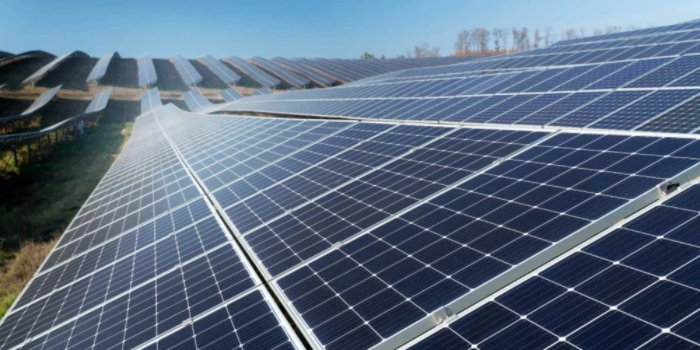
Difference in Price
The cost of solar panels is largely determined by the type of silicon used for their production. The two main types of materials, monocrystalline and polycrystalline silicon, differ drastically not only in their performance but also in price. Their cost differs due to the specifics of the production process and silicon purification.
Monocrystalline Silicon Costs
The production of monocrystalline silicon is more expensive due to the complexity of the process involved in its production and the higher material purity. The Czochralski process, as the method of producing monocrystalline silicon is called, involves drawing a single crystal of silicon from a molten silicon bath in a highly controlled environment. As a result, the silicon crystals are consistent and aligned, which adds to the overall efficiency but also to the production price.
Accordingly, the price of monocrystalline silicon solar panels is generally 20% to 30% higher than those of their polycrystalline counterparts. Despite the importance of these prices, the majority of people still opts for monocrystalline panels because of the longer lifespan and higher efficiency. The latter is mostly vital for those customers that are limited in space and need the maximum power output.
Polycrystalline Silicon Prices Advantages
Polycrystalline silicon offers a cheaper alternative. The production process of the material implies the shorting of molten silicon into a square mold, and after it is cooled, it is cut into wafers. This method is not that deliberate nor does it consume such high levels of energy.
At the same time, the materials that comprise the polycrystalline panels are also cheaper as they are not as pure as is the case with the monocrystalline. All of these factors make the polycrystalline solar panels about 10%-20% cheaper.
Economic Aspects for Buyers
Buyers should take into account both the cost and the potential energy savings. People that have limited space and require maximum power output might consider overpaying for better efficiency and higher durability. Meanwhile, large-scale installations that are not limited in space could use the lower prices of polycrystalline panels for increasing return on investment though the efficiency will be lower. Finally, both of the panels have been getting cheaper over time, and the tendency is expected to persist.
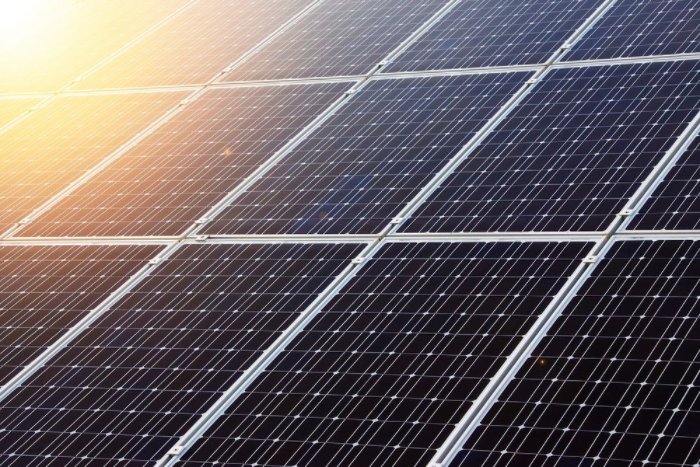
Selection Criteria
The choice between the two types of silicon, whether monocrystalline or polycrystalline, depends on a number of certain conditions and selection criteria, which can considerably impact the performance and the use of solar panels. Moreover, both types of silicon have certain pros, which can be useful to understand in order to choose the best option based on efficiency, costs, and environments.
Efficiency Evaluation as a Criterion
In case high efficiency is of utmost importance for the client, it is better to go for monocrystalline silicon. Estimates suggest that these solar panels are 18-22% efficient, which makes them suitable for places with limited space but where power is paramount . The efficiency is calculated and affects the results of productions precisely in relation to low-light conditions from November to February, which are common in Europe. In addition, their value in overall efficiency, as already stated above, also allows them to be used in residential applications and small commercial businesses where solar panels in the period must produce the most power.
Costs as the Main Decision Criteria
However, in cases where the client has limited funds, it is better to opt for polycrystalline silicon. It costs anywhere from 10-20% less than monocrystalline silicon and thus, is a viable option for companies or institutions with large areas to install solar panels but also with limited funds. The lower efficiency of polycrystalline silicon is easily compensable by the fact that the spaces will not be limited and investing into monocrystalline was unnecessary.
Environment and Installation as Criteria
A lot also depends on the installation, and the environment. For instance, monocrystal panels are highly resistant to high temperatures, and they are often recommended for hot places where solar panel efficiency degrades the fastest. For cooler places, or for places with less of an impact of the sun, it can be more viable to go for polycrystalline silicon because of reduced initial investments.
Long-Term Plans
Finally, it is also important to understand how long the client is planning to use the solar panels. Monocrystalline solar panels live longer, and the degradation is almost invisible in the first two decades, at least. Should the client be planning to install solar panels for decades to come, it is better to invest in monocrystalline options.
Ease of Installation
During the installation of solar energy solutions, installation simplicity is a one of the most important factors that can impact both the time and the cost of the project. Monocrystalline and polycrystalline silicon panels are similar in many ways, but they do have different quirks during installation that might be important for the project timing and work cost.
Weight and Handling
Monocrystalline panels are generally lighter than their polycrystalline equivalent due to the high-grade silicon and more efficiency in their construction. The fact that the panels are lighter makes them easier to handle and install, which means that the installation time would be shorter and the labor might be cheaper. It is particularly important when installing panels on the rooftops because the installation of anything heavy requires special considerations that slow down the process.
Structural Differences
The structure of both panels from the outside looks largely the same which means both types could use the same mounting. However, the robustness of monocrystalline panels means that they might need less support points which simplifies the mounting process. It is particularly important when considering the conditions of panels mounting at complex architectural environments, where every additional support point would require special workflows.
Installation Flexibility
Monocrystalline silicon’s better performance per square foot means that panels can have many more configurations to achieve the desired power output. It is particularly important for buildings of certain shapes and sizes that can benefit from the possibility to increase the number of panels on the area. Some structures might decide to use the additional space on their roofs for water tanks or garden plots which makes installation even more challenging.
Tolerance to Various Conditions
Monocrystalline panels have better performance under partial shade which means that they can have more flexible placement on the properties with buildings and trees. Panels still have to be exposed to direct sunlight, but it means that they can be placed in spots that polycrystalline panels would not work at all. A common concern of the installation specifies would be the particular orientation of a house that would not work with traditional panels, making monocrystalline a better choice.
Standardization
On the other hand, polycrystalline panels are the cheap and strong favorite in the solar panels market. They are considerably easier to find and there are many more installers that can do maintenance for them which makes them a safer bet. In the case of a large solar farm installation, the ability to use the same panels and the same installer throughout the farm would save a lot of transportation costs over time.
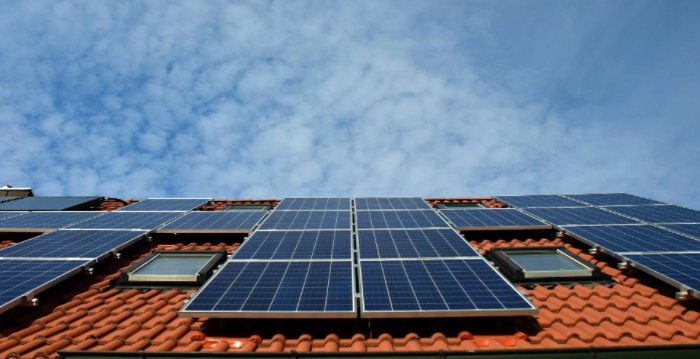
Durability Comparison
Durability is one of the primary concerns in the choice of solar panels as it influences the long-term performance and value for money. Monocrystalline and polycrystalline silicon panels can differ in how well they can withstand environmental challenges over time as well as in efficiency and cost. Specifically, monocrystalline solar panels degrade at a lower pace due to the superior crystal quality of monocrystalline silicon and better handle of temperature changes.
Material Purity and Structural Integrity
Monocrystalline silicon inherently facilitates durability due to the higher material purity of the one single crystal. It significantly reduces the opportunities for breakdowns as there are practically no structural weaknesses and fewer boundaries in the structure where weakness may develop. More specifically, as the number and length of boundaries between crystals become substantially reduced in monocrystalline silicon, there are fewer opportunities of development and lengthening of micro-cracks over time due to the stress from thermal cycling.
Impact of Temperature Changes
Monocrystalline solar panels with high-quality crystal structure typically handle temperature fluctuations better than polycrystalline panels. The temperature resistance is crucial in areas with extreme temperature amplitudes. Monocrystalline panels tend to degrade slower than polycrystalline technology, and they likely degrade at an annual rate of 0.3% to 0.4% . In contrast, the polycrystalline panels degrade at about 0.5% to 0.7% per year.
Resistance to Environmental Factors
Both types of panels are designed to have high durability against environmental factors such as wind, rain, and hail. The material homogeneity, however, may ensure that the panels are slightly more resistant to these environmental factors.
Warranty and Lifespan Expectations
Manufacturers tend to strategically reflect the expected durability of the product in the warranty conditions. Monocrystalline solar panels are associated with a longer lifespan and therefore the longer warranty, which can be 25-30 years in extreme cases. In contrast, polycrystalline solar panels would not last as long and be associated with a slightly shorter warranty term.

